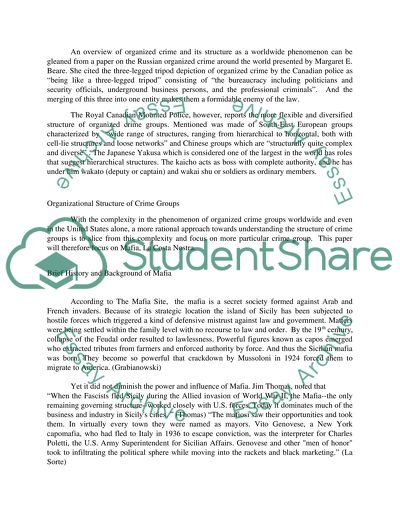Cite this document
(“General Overview of Organized Crime Term Paper Example | Topics and Well Written Essays - 2000 words”, n.d.)
General Overview of Organized Crime Term Paper Example | Topics and Well Written Essays - 2000 words. Retrieved from https://studentshare.org/social-science/1531431-organized-crime-high-school-essay
General Overview of Organized Crime Term Paper Example | Topics and Well Written Essays - 2000 words. Retrieved from https://studentshare.org/social-science/1531431-organized-crime-high-school-essay
(General Overview of Organized Crime Term Paper Example | Topics and Well Written Essays - 2000 Words)
General Overview of Organized Crime Term Paper Example | Topics and Well Written Essays - 2000 Words. https://studentshare.org/social-science/1531431-organized-crime-high-school-essay.
General Overview of Organized Crime Term Paper Example | Topics and Well Written Essays - 2000 Words. https://studentshare.org/social-science/1531431-organized-crime-high-school-essay.
“General Overview of Organized Crime Term Paper Example | Topics and Well Written Essays - 2000 Words”, n.d. https://studentshare.org/social-science/1531431-organized-crime-high-school-essay.


